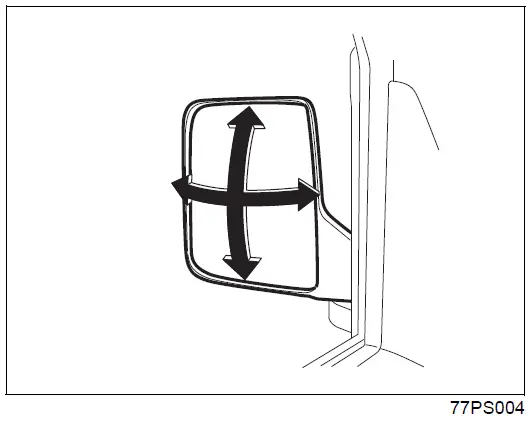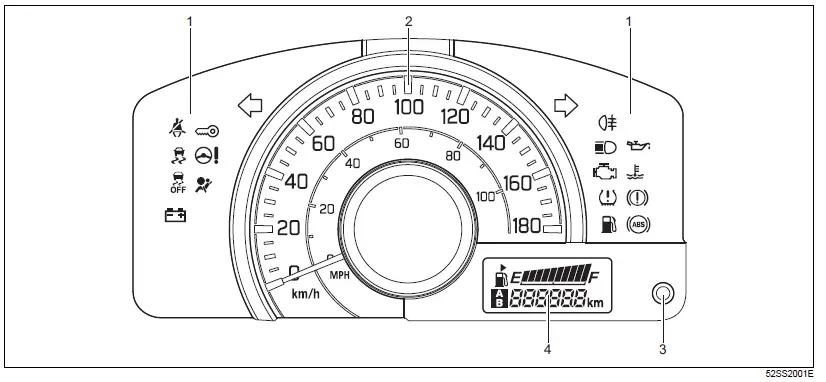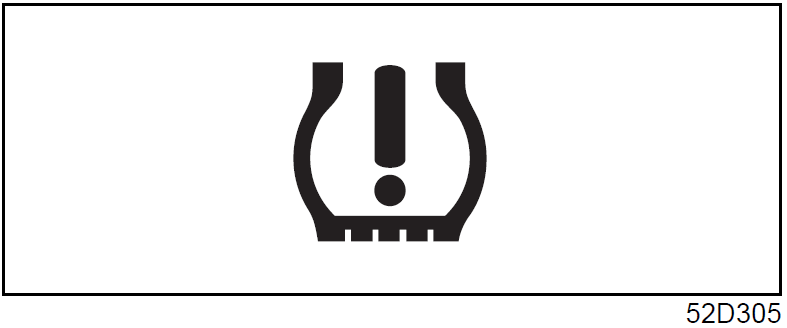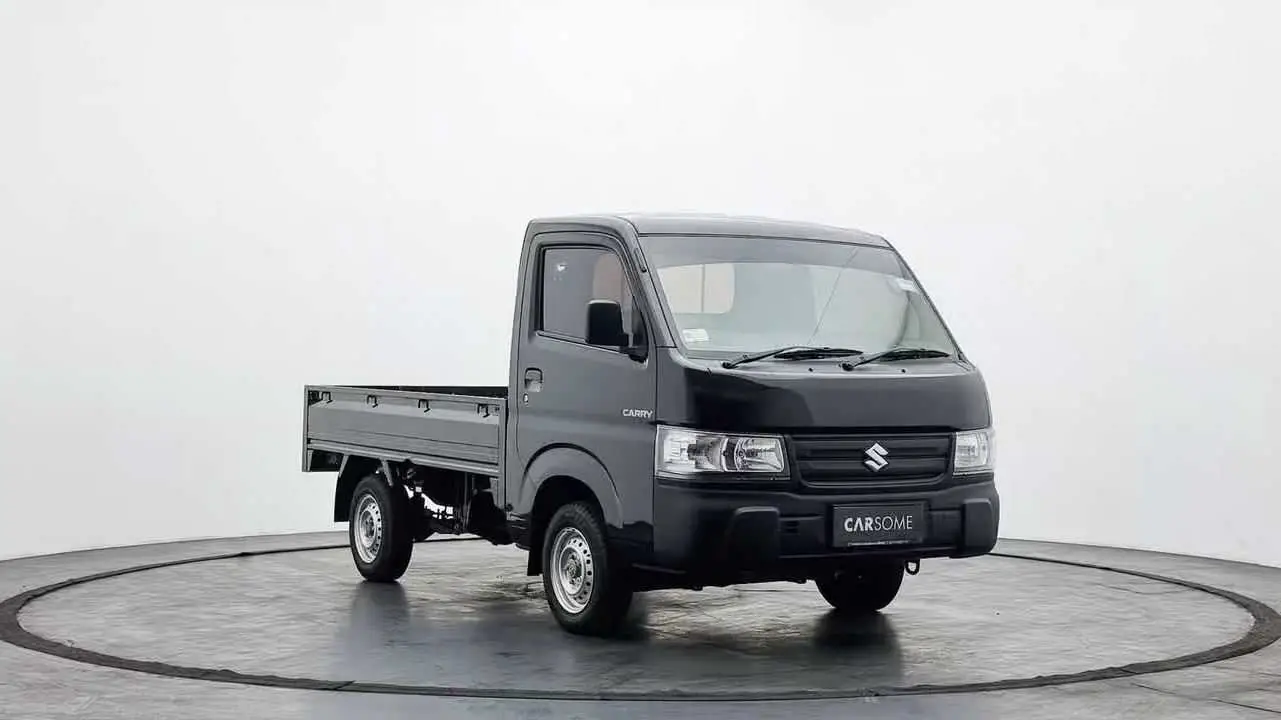Suzuki New CARRY 2019 Windows and Instrument Cluster User Manual
Windows
Raise or lower the door windows by turning the handle located on the door panel.
Mirrors
Inside Rearview Mirror
You can adjust the inside rearview mirror by hand so as to see the rear of your vehicle in the mirror.
Outside Rearview Mirrors
You can adjust the outside rearview mirrors by hand so as to see the sides of your vehicle in the mirrors.
NOTE:
Be careful when judging the size or distance of a vehicle or other object seen in the side convex mirror. Be aware that objects look smaller and appear farther away than when seen in a flat mirror.
Instrument Cluster
- Warning and indicator lights
- Speedometer
- Trip meter selector knob
- Information display

Warning and Indicator Lights
Low Tyre Pressure Warning Light (if equipped)
As an added fuel efficiency feature, your vehicle is equipped with a tyre pressure monitoring system (TPMS) that uses a low tyre pressure warning light to inform you when one or more of your tyres is significantly under-inflated. When the ignition switch is turned “ON”, this light comes on briefly so you can check that the light is working.
When the low tyre pressure warning light is lit, one or more of your tyres is significantly under-inflated. You should stop and check your tyres as soon as possible, and inflate them to the proper pressure as indicated on the vehicle’s tyre information placard. Driving on a significantly under-inflated tyre causes the tyre to overheat and can lead to tyre failure. Under-inflation also reduces fuel efficiency and tyre tread life, and may affect the vehicle’s handling and stopping ability. Each tyre, including the spare, should be checked at least once a month when cold and set to the recommended inflation pressure as specified in the vehicle placard.
The low tyre pressure warning light is also used to inform you of a TPMS malfunction. When the system detects a malfunction, this light will blink for about 75 seconds and then remain continuously illuminated. This sequence will be repeated after the ignition switch is turned “ON” as long as the malfunction exists.
NOTE:
The low tyre pressure warning light may not come on immediately if you have a sudden loss of air pressure.
WARNING
Failure to take corrective action when the low tyre pressure warning light is not working or when it comes on and blinks while driving can lead to an accident.
If the low tyre pressure warning light does not come on for 2 seconds after the ignition switch is turned “ON”, or the light comes on and blinks while driving, have your vehicle inspected by a SUZUKI dealer. Even if the light turns off after blinking, indicating that the monitoring system has recovered, you should still have the system checked by a SUZUKI dealer.
- The load-carrying capacity of your tyres is reduced at lower inflation pressures. If your tyres are even moderately under-inflated, the load on the tyres may exceed the load-carrying capacity of the tyres, which could lead to tyre failure. The low tyre pressure warning light will not alert you to this condition, because it only comes on when one or more of your tyres becomes significantly under-inflated. Check and adjust your tyre pressure at least once a month. Refer to “Tyres” in “INSPECTION AND MAINTENANCE” section.
- Continuing to drive with the low tyre pressure warning light on can lead to an accident, resulting in severe injury or death.
If the low tyre pressure warning light comes on and stays on, reduce your speed and avoid abrupt steering and braking. Be aware that driving on a signifi-cantly under-inflated tyre can cause the tyre to overheat and can lead to tyre failure, and may affect steering control and brake effec-tiveness. Stop the vehicle in a safe place as soon as possible and check your tyres.- If you have a flat tyre, replace it with the spare tyre. Refer to “Jacking Instructions” in “EMER-GENCY SERVICE” section for the tyre replacement method. Also refer to “Replacing tyres and/or wheels” for instructions on how to restore normal operation of the TPMS after you have had a flat tyre.
- If one or more of your tyres is under-inflated, adjust the inflation pressure of all tyres to the recommended inflation pressure as soon as possible.
For additional details on the tyre pressure monitoring system, refer to “Tyres” in “INSPECTION AND MAINTENANCE” section for information on maintaining proper tyre pressure.
Reference Links
View Full User Guide : Suzuki New CARRY 2019 User Manual
Download Manuals: : https://suzuki-aftersales.net/manuals


